If you have to go to a supermarket to buy burger buns, the selection is often a bit sad.
A good burger bun needs flavour, it needs to be fluffy and it needs to be solid enough to hold the burger together without breaking apart completely. That's how these delicious brioche-style burger buns turn out.
As with all baked goods, it pays to be meticulous about the processes involved - so my explanations may be a little long, but it's not complicated at all!

A good burger bun needs flavour, it needs to be fluffy and it needs to be solid enough to hold the burger together
Ingredienser, 12-14 stk – Brioche Burgerboller
250 g of milk
2 eggs (I use size L)
60 g butter (soft)
25 fresh yeast (or 10 g instant dry yeast)
8 g salt
20 g sugar
12 g baking enzyme (optional)
18 g gluten (optional)
600 g wheat flour, 12% protein content
1 egg for brushing + sesame seeds if desired
Baking enzymes and gluten help to make the buns fluffier - but if you don't have it, replace it with 25g of extra wheat flour - the result will be fine anyway.
Method
Warm the milk - this is best done in a microwave for 30 seconds.
Soften the butter for 30 seconds in the microwave
Pour the milk, eggs, sugar, baking enzyme, gluten and yeast into the mixing bowl of your mixer - or just the bowl you want to use if you want to knead by hand. Stir until the yeast is dissolved (if using fresh yeast).
Add 200 g of wheat flour with the butter and stir until the butter is incorporated into the mixture. Add the rest of the flour + 8 g salt and knead it thoroughly - on the mixer I let it run for about 10 minutes at medium speed.
Take the dough out on the table and fold it up - i.e. pull a corner over the dough, turn it slightly, repeat, repeat - a bit like stretching and folding a sourdough. When you have a nice, round lump with a ‘tight’ surface, place it in the bowl with the joint at the bottom, spray the surface with a little water, cover it with a cloth and let it rise for 1½ hours at room temperature to at least double in size.
Take the dough out on the table and squeeze the air out of it while forming it into a square - fold the top third down over the centre and the bottom third up over the centre so that the dough is folded into 3 layers (which will stick together). We do this to build up more gluten layers in the dough.
Vej dejen af i enten 12 90 grams stykker eller 14 77 grams stykker. Det bør passe nogenlunde med mængden. Hvert stykkes virkes op på samme måde, som den større dejklump blev tidligere og skal ende med at være en fin, rund bolle med en slags samling eller “navle” under bunden. Du skal kunne mærke, at du har “strammet” dem op.
Let them rest for a few minutes to get them ready to work with again. It takes a little time to work each lump, so it's likely that the first lump will be ready when the last lump is formed.
Roll each lump flat with a rolling pin to a diameter about 1-2 centimetres smaller than your burger patty should be. Place them on baking paper on 2 baking trays, leaving plenty of space between them so they don't stick together after being baked.
Leave them to rise for an hour. After 40 minutes, you can heat up the oven, 190° if you're using convection, 215° for traditional heat. Place a small baking tray in the bottom of the oven (or an ovenproof dish), preferably with granite chips if you have them.
Beat an egg and brush the buns thoroughly. Sprinkle with sesame seeds if you like.
When you place a plate in the oven (in the centre), pour 1 dl. of water into the roasting pan at the bottom (possibly with granite chips) and quickly close the door to keep the steam inside. I bake 1 tray at a time, also with hot air.
Bake 18-22 minutes depending on your oven.
Cool on a wire rack

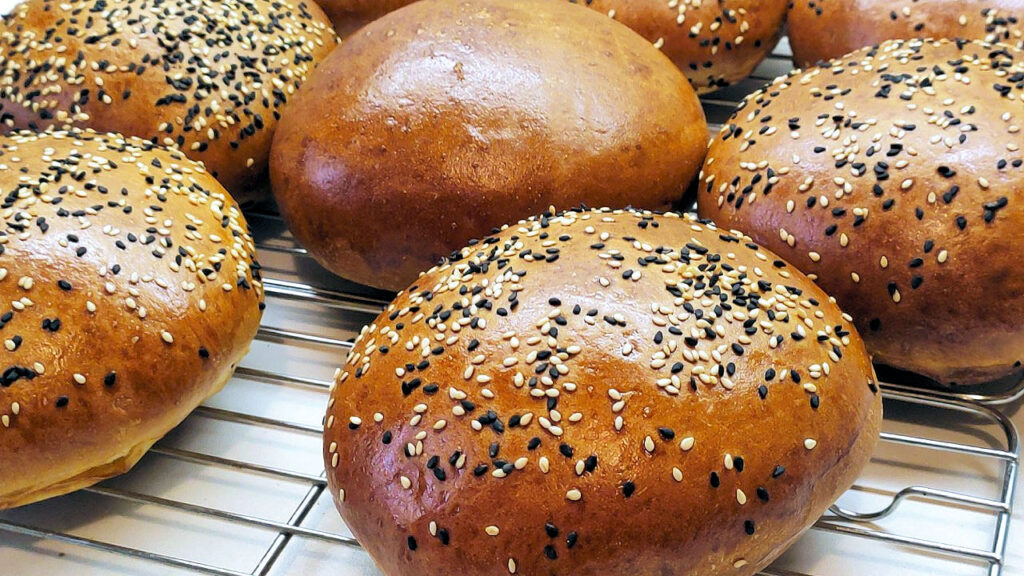
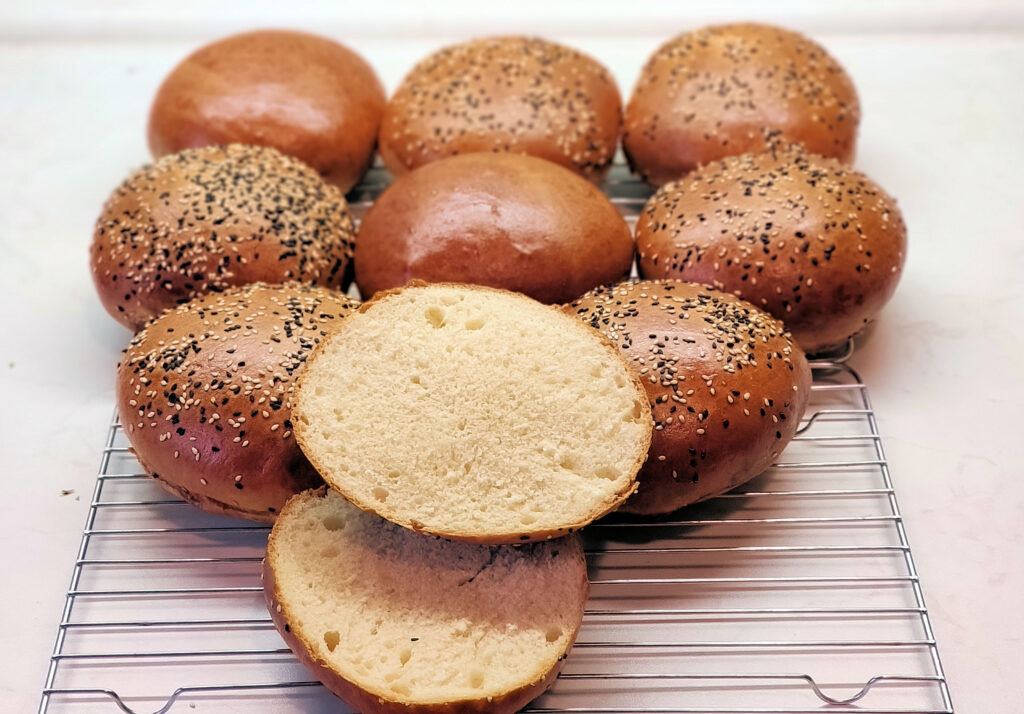

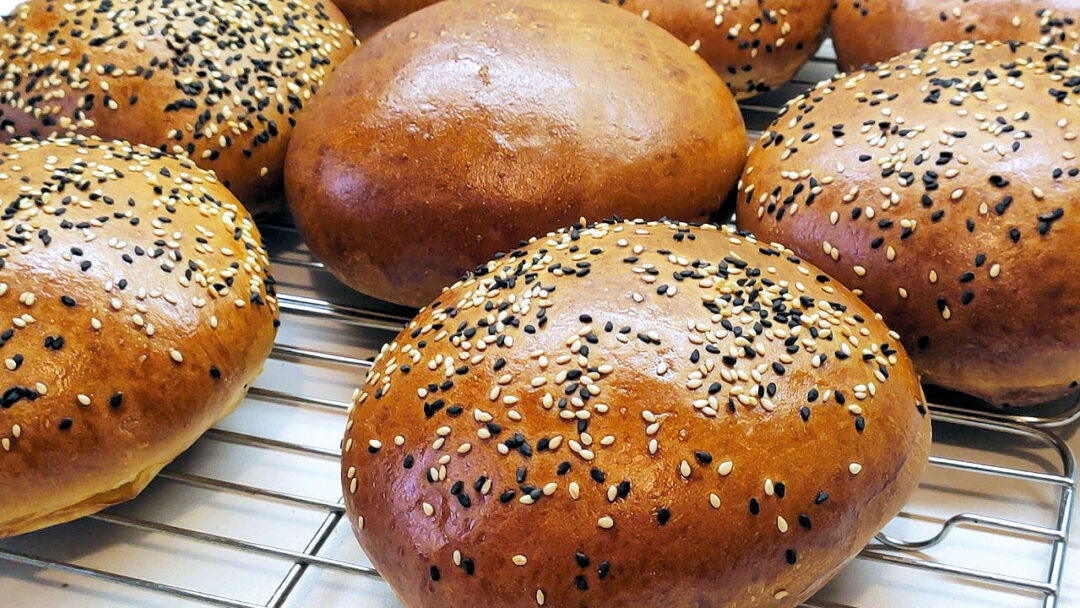
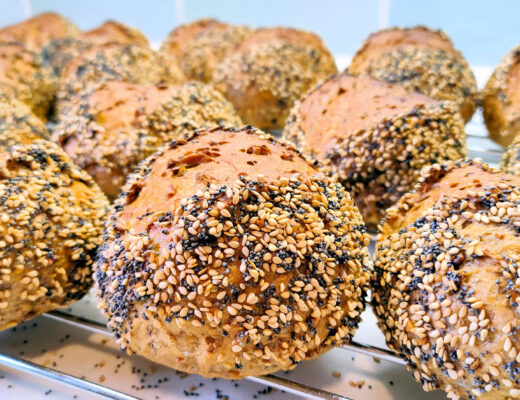

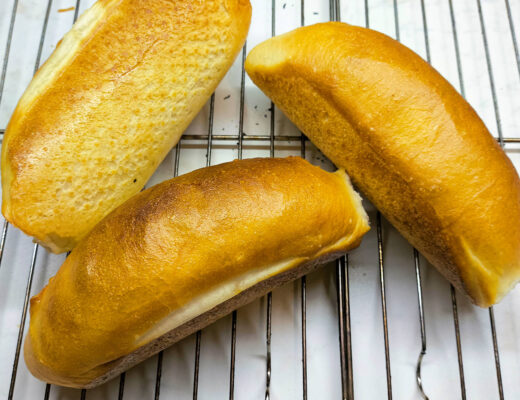
No Comments